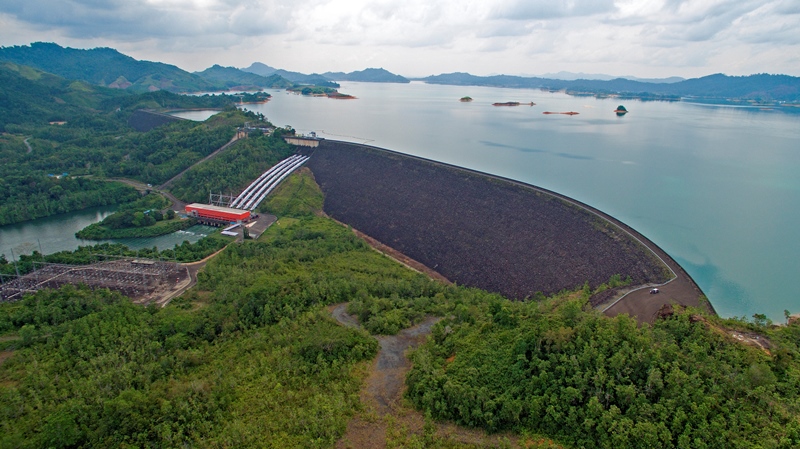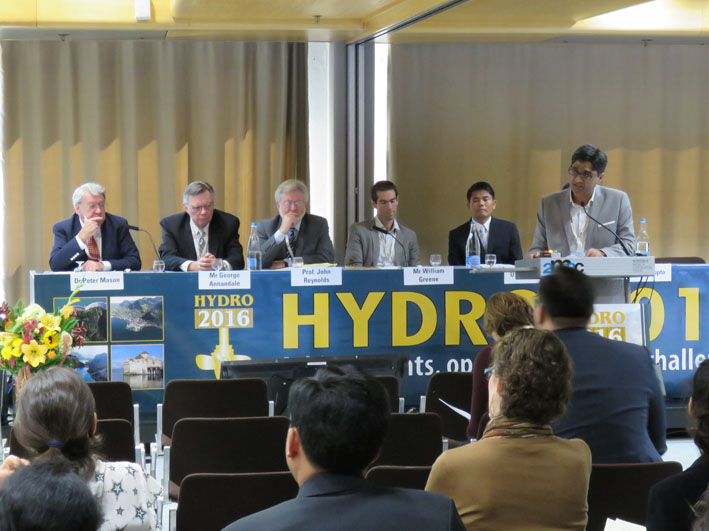

NEWS & UPDATES
Climate Change Would Not Affect Batang Ai HEP's Reservoir Inflows - A Joint Study By Sarawak Energy and UTP
KUCHING, 11 FEBRUARY 2017, SATURDAY: A research article “Potential Impact of Climate Change on Inflows to the Batang Ai Reservoir, Malaysia” concludes that the Batang Ai Hydroelectric Plant’s (HEP) reservoir inflows will not be affected by potential changes in weather pattern due to climate change.
The article appeared in the International Journal on Hydropower & Dams (Issue one, 2017) and was co-authored by two of Sarawak Energy’s hydrologists - Mubasher Hussain and Susie Nadya David Asen together with K.W. Yusof and M.R. Mustafa, an associate professor and a senior lecturer at Universiti Teknologi PETRONAS (UTP). Mubasher also presented the article at Hydro 2016 International Conference and Exhibition in Montreux, Switzerland last October.
Based on a study to determine possible climate change impacts on inflow to the Batang Ai hydroelectric plant (HEP) to help assess future annual energy yields for the plant, it was concluded that there would be no changes in the annual inflow although the driest month of July would be wetter compared to what it was in the past while August and September would receive slightly lower rainfalls in next decades.
Built over 30 years ago, Batang Ai hydroelectric plant (HEP) is the first milestone in Sarawak Energy’s journey towards renewable energy. It also showcases the symbiotic relationship between hydropower generation, community development and wildlife conservation.
James Ung (翁新光), Executive Vice President for SEB Power Sdn Bhd, the power generation subsidiary of Sarawak Energy said about 75 percent of Sarawak’s generation mix comes from hydropower plants.
“The study is important to understand the climate resilience of our hydro plants and I am very proud of the contribution of our team towards building up the body of knowledge we have in this area,” he said.
“Being featured in an esteemed industrial journal like the International Journal on Hydropower & Dams speaks volumes of our ability to stand alongside leaders in hydropower,” he said.
Sarawak Energy is a Sustainability Partner of the International Hydropower Association (IHA) and is guided by the IHA’s Sustainability Assessment Protocol and international best practices to measure and report against a full range of measures of sustainability.
Sarawak Energy is continuing to study the potential impact of weather changes on hydropower plants.
Polycarp Wong (黄雄輝), Vice President of Hydro said, “At the moment the team is conducting another study on rainfall projection over the Rajang River Basin under various future climate scenarios as per Intergovernmental Panel on Climate Change (IPCC)’s guidelines.”
Sarawak’s major hydro plants such as Bakun HEP (2,400 MW), Murum HEP (944 MW) and upcoming Baleh HEP (1,285 MW) are located in upper Rajang River Basin. The study of climate change impacts assessment will provide guidance for climate resilience and adaptation of these hydro assets.
Mubasher is the Senior Hydrologist at Sarawak Energy and is currently undertaking his PhD research whilst working full time. His area of research focuses on climatic change impact on hydropower in Sarawak whereas Susie Nadya deals with hydrological and hydropower energy assessments for hydroelectric projects.



